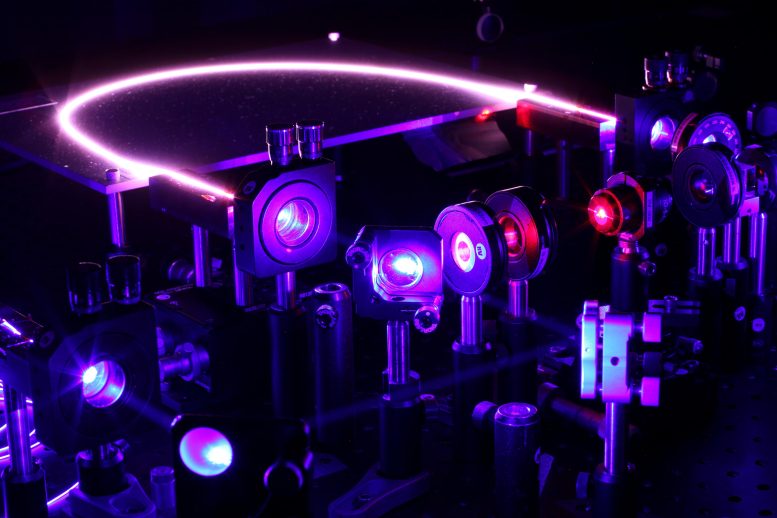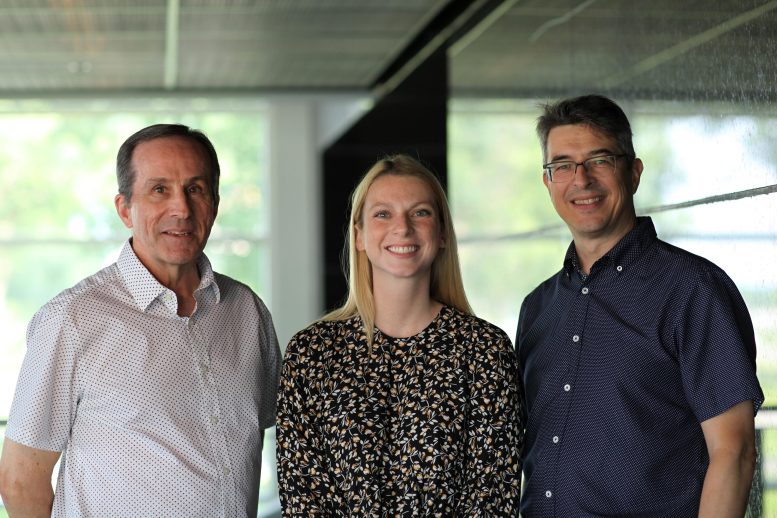
Researchers have developed the first fiber laser that can produce femtosecond pulses in the visible range of the electromagnetic spectrum. Credit: Jérôme Lapointe
Technology advance lays groundwork for reliable, compact ultrafast lasers for biomedical applications and more.
Researchers have recently developed the first fiber laser capable of producing femtosecond pulses in the visible range of the electromagnetic spectrum. This advancement holds potential for various biomedical and material processing applications. The unique feature of these lasers is their ability to produce ultrashort, bright visible-wavelength pulses, a significant step forward in laser technology.
Overcoming Challenges in Fiber Laser Development
Historically, achieving visible femtosecond pulses required complex and inherently inefficient setups. Although fiber lasers represent a very promising alternative due to their ruggedness/reliability, small footprint, efficiency, lower cost, and high brightness, it hasn’t been possible, until now, to produce visible pulses with durations in the femtosecond (10-15 s) range directly with such lasers.
“Our demonstration of a femtosecond fiber laser operating in the visible spectrum paves the way for a new class of reliable, efficient, and compact ultrafast lasers,” said research team leader Réal Vallée from Université Laval in Canada.
Technical Details of the New Fiber Laser
The researchers describe their new laser, which is based on a lanthanide-doped fluoride fiber, in the Optica Publishing Group journal Optics Letters. Emitting red light at 635 nm, the laser achieves compressed pulses with a duration of 168 fs, a peak power of 0.73 kW, and a repetition rate of 137 MHz. Using a commercial blue laser diode as the optical source of energy, or pump source, helped make the overall design rugged, compact, and cost-efficient.

The research team included Réal Vallée, Marie-Pier Lord, and Michel Olivier as well as Martin Bernier who is not pictured. Credit: Jérôme Lapointe
“Provided higher energies and powers can be achieved in the near future, many applications could benefit from this type of laser,” said Marie-Pier Lord a doctoral student involved in the project. “Potential applications include high-precision, high-quality ablation of biological tissues and two-SciTechDaily